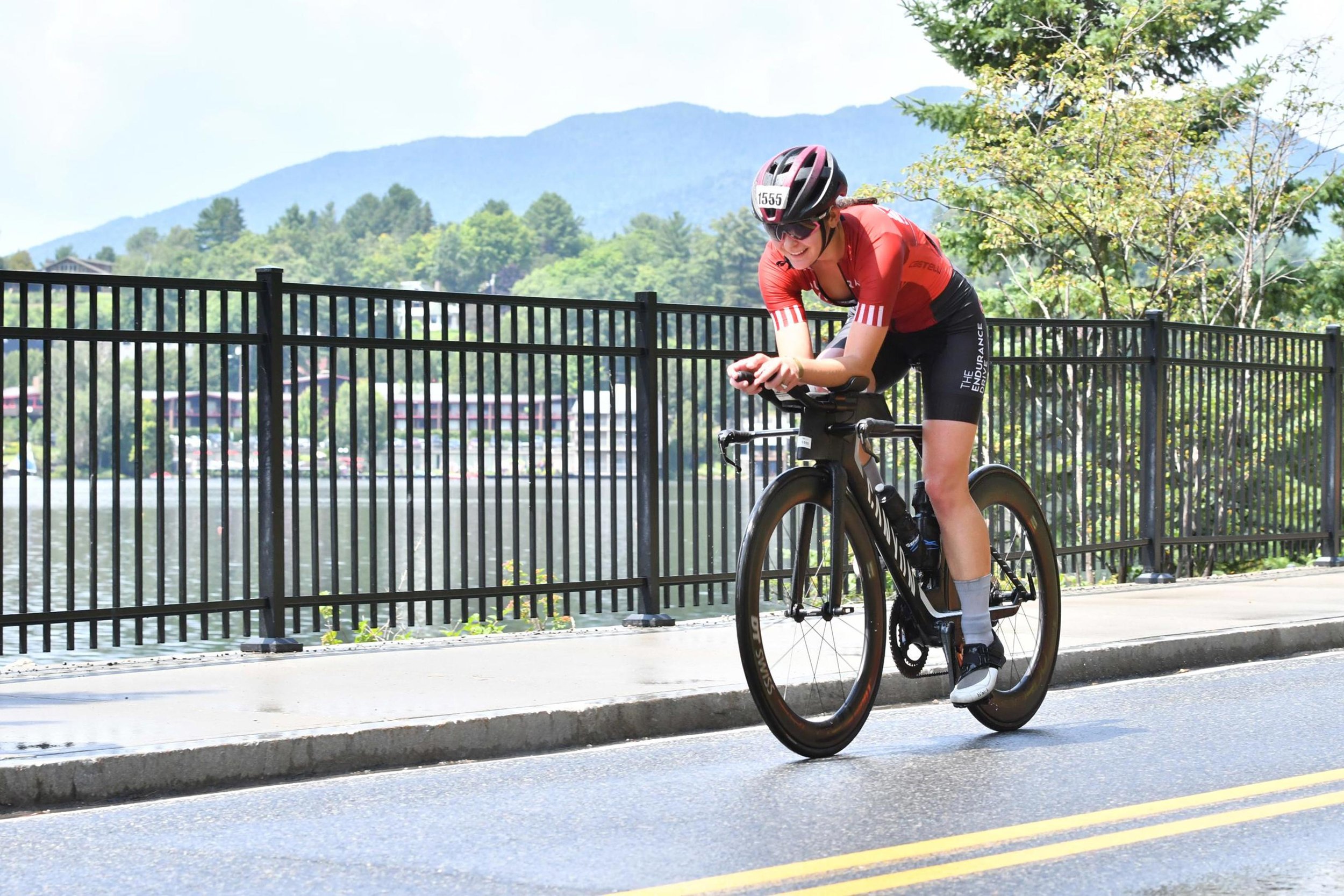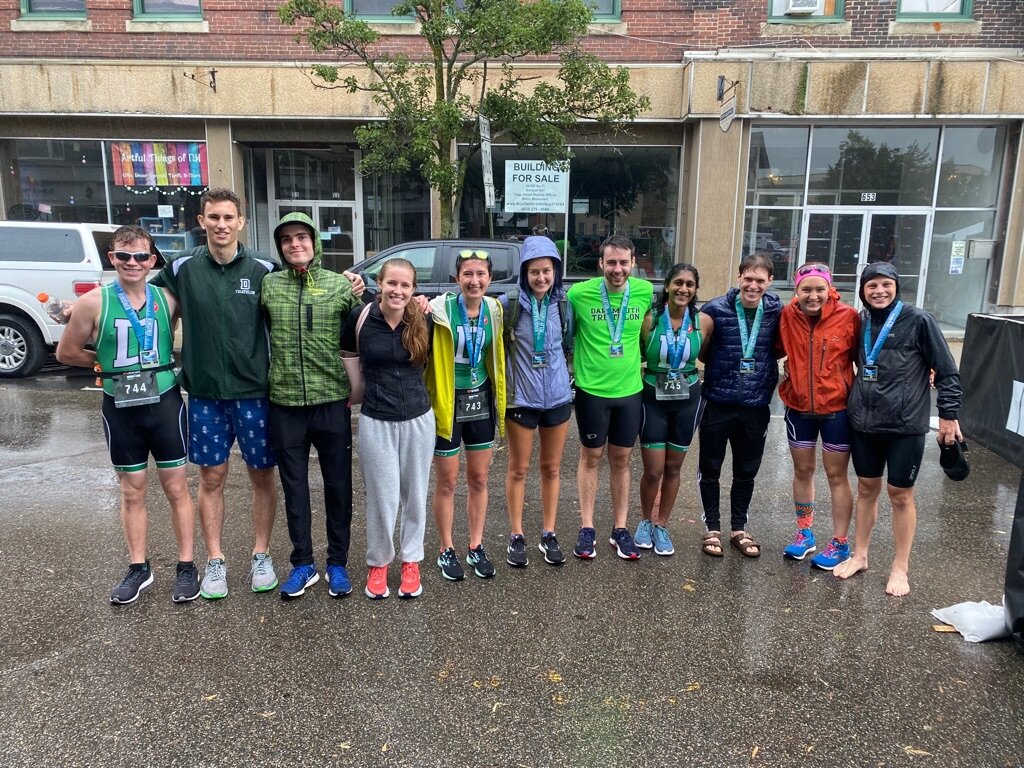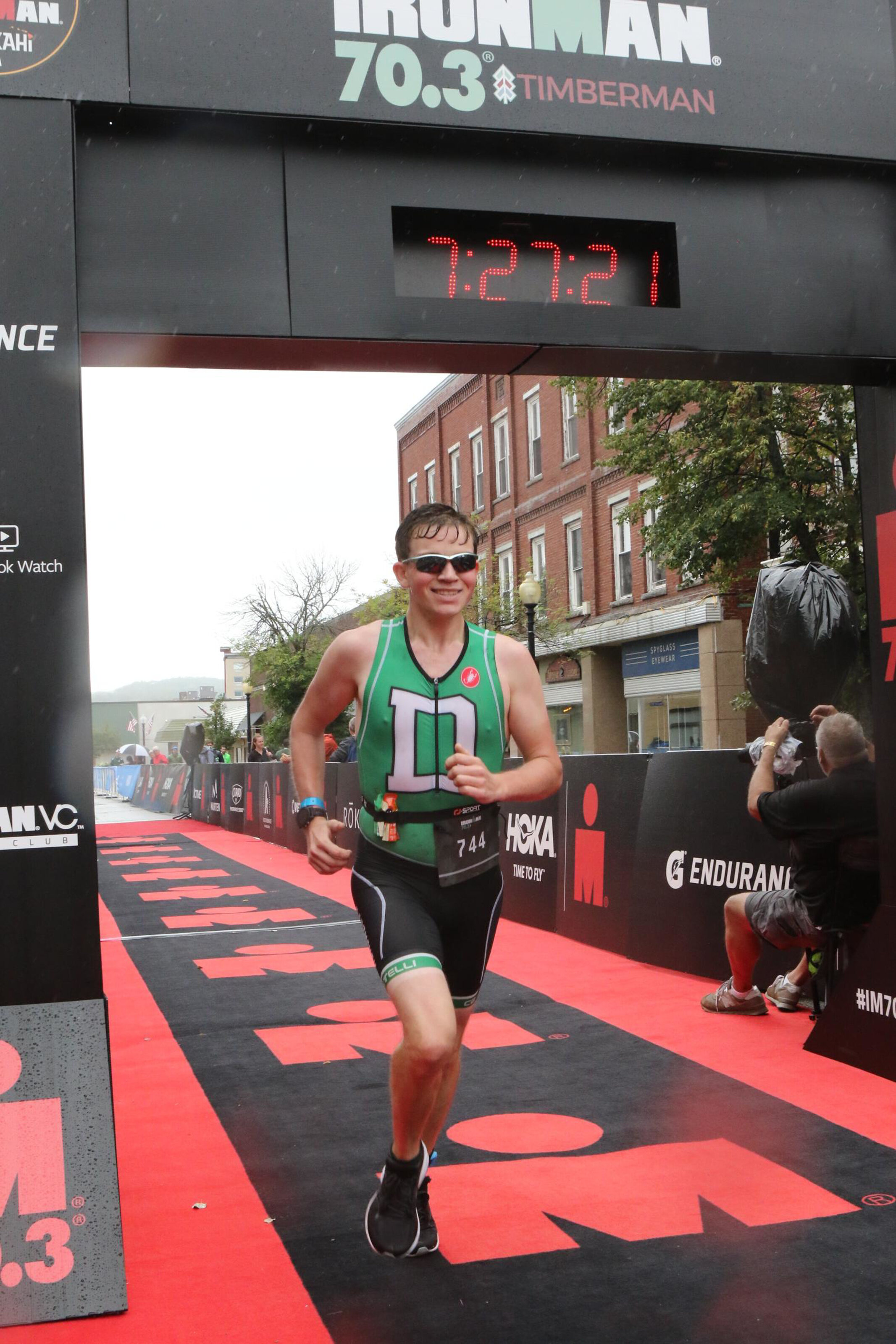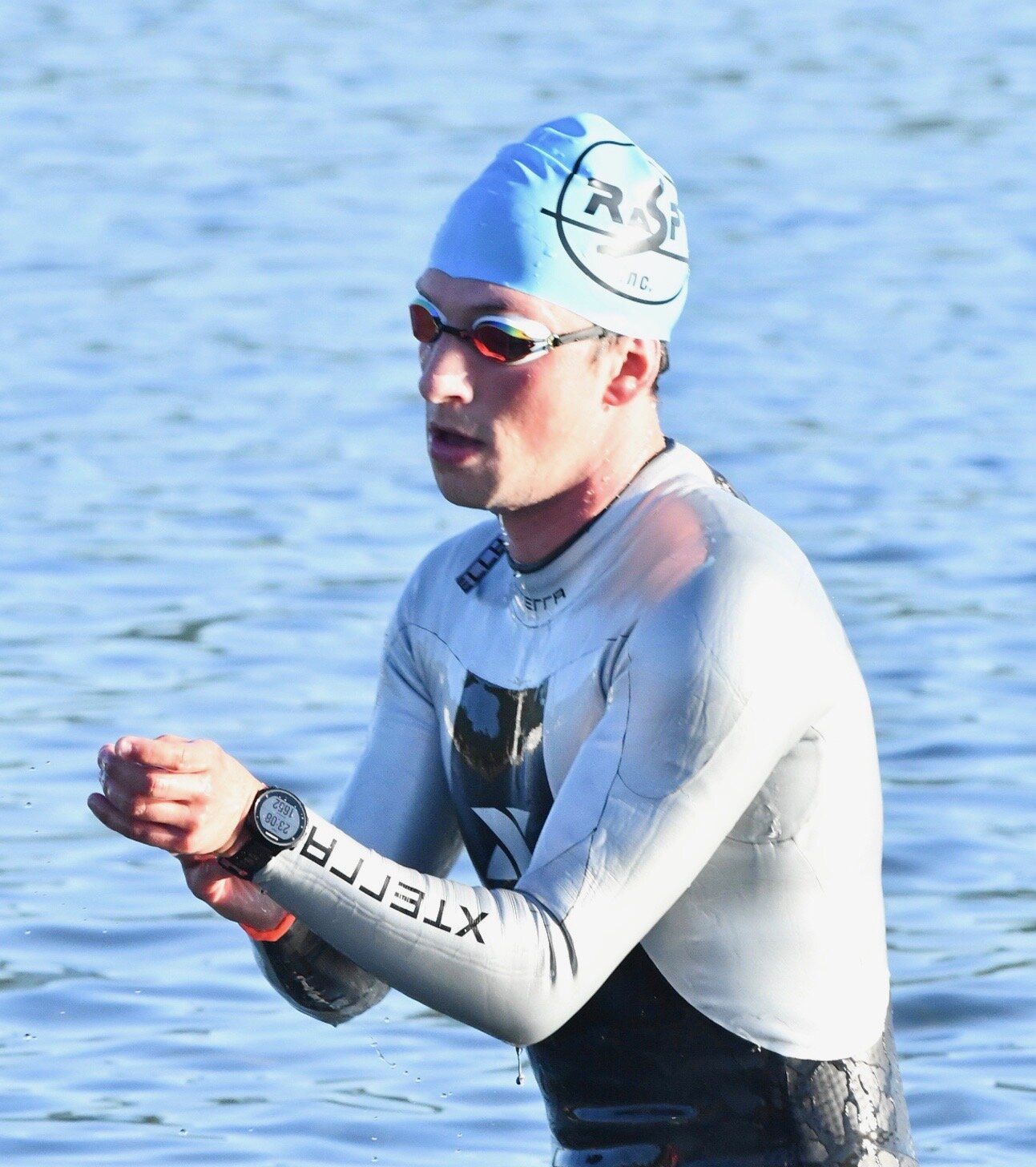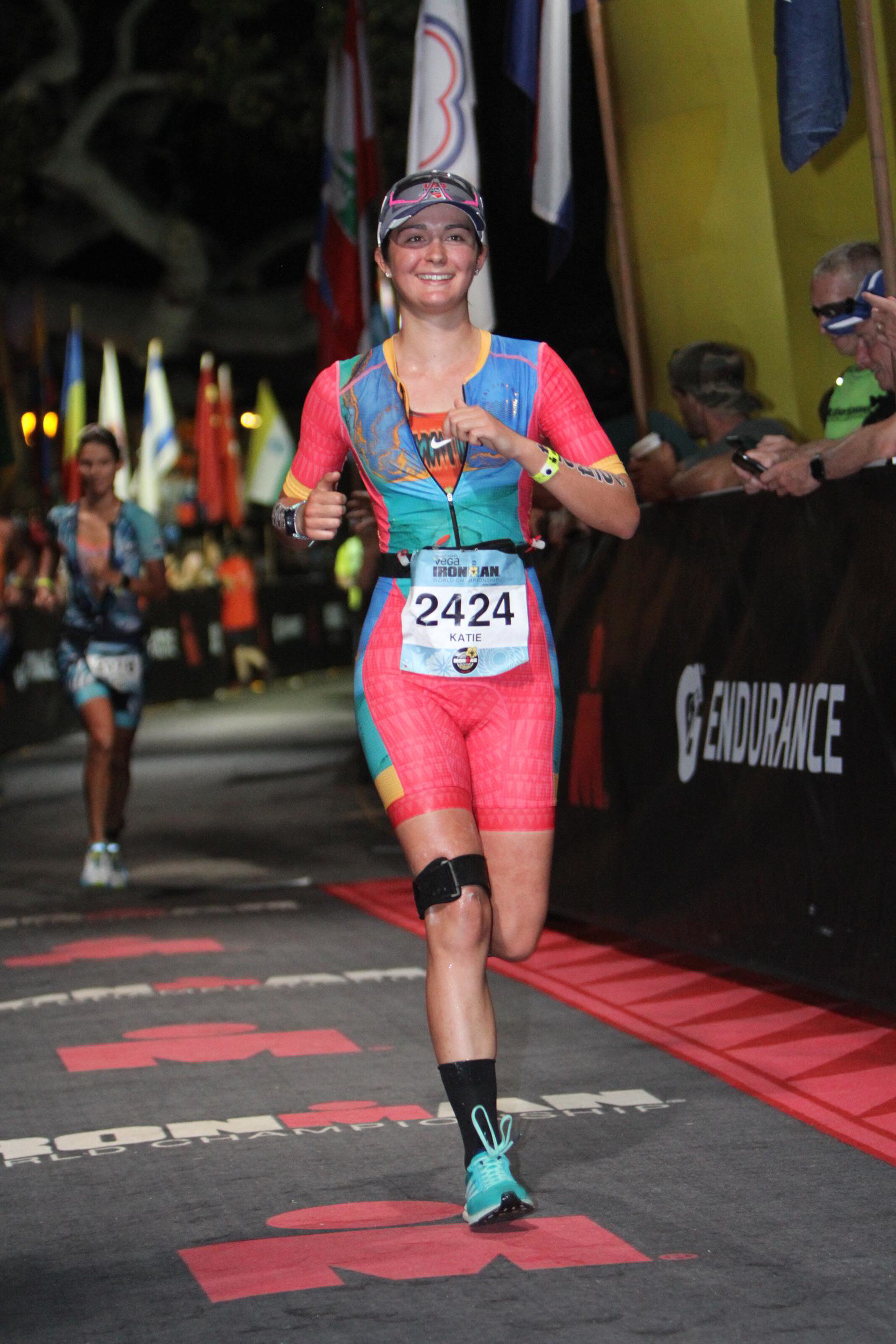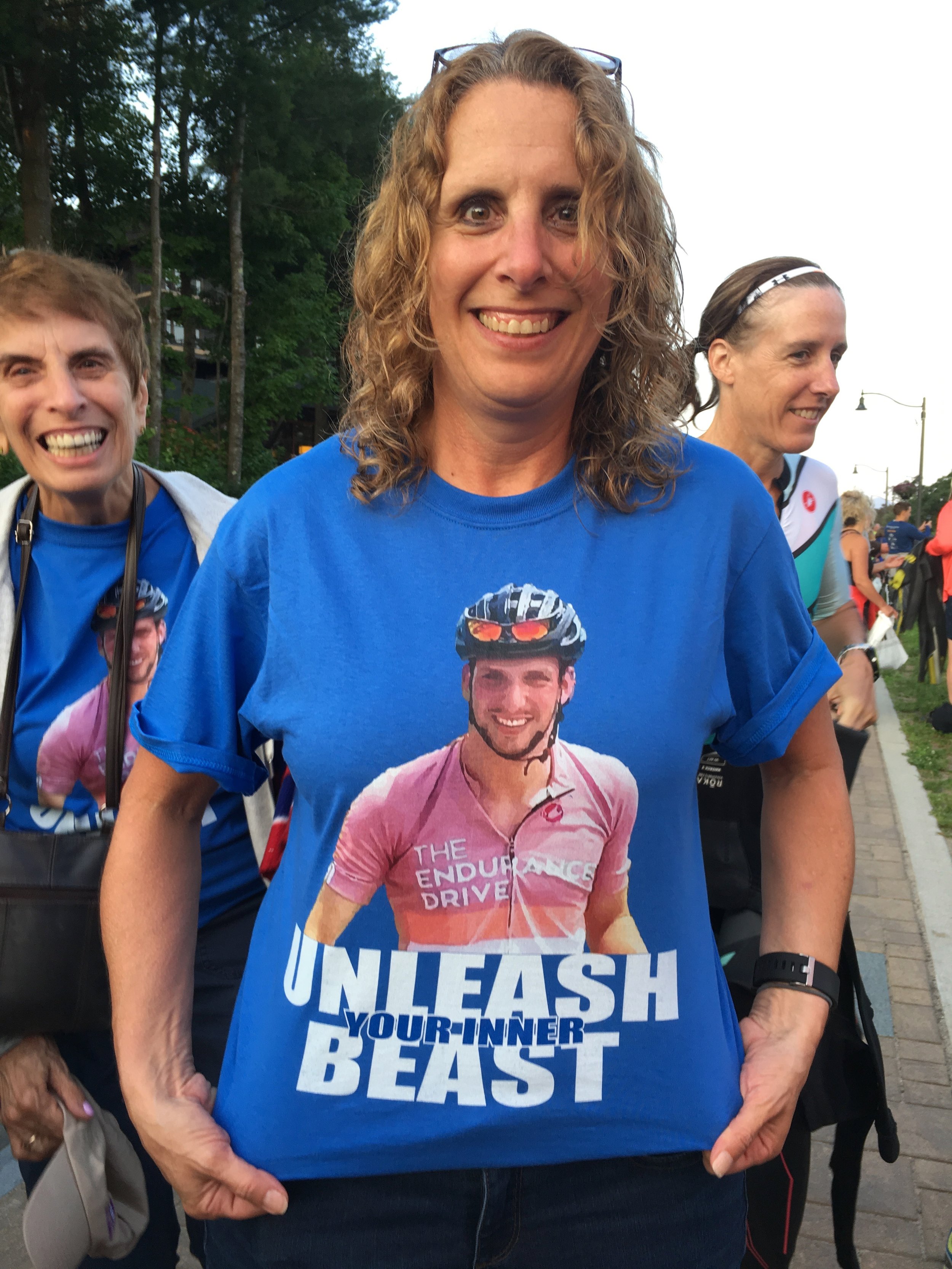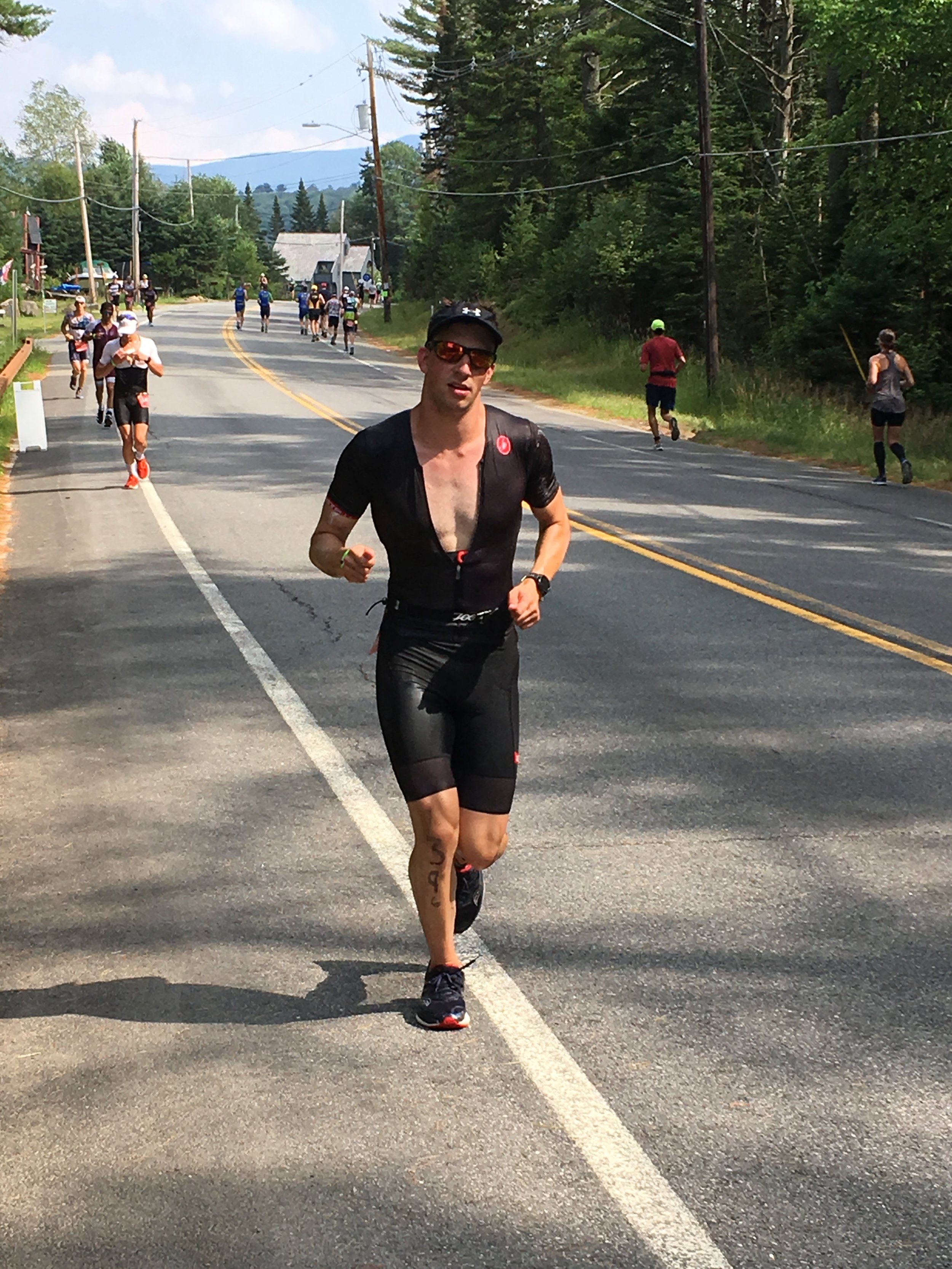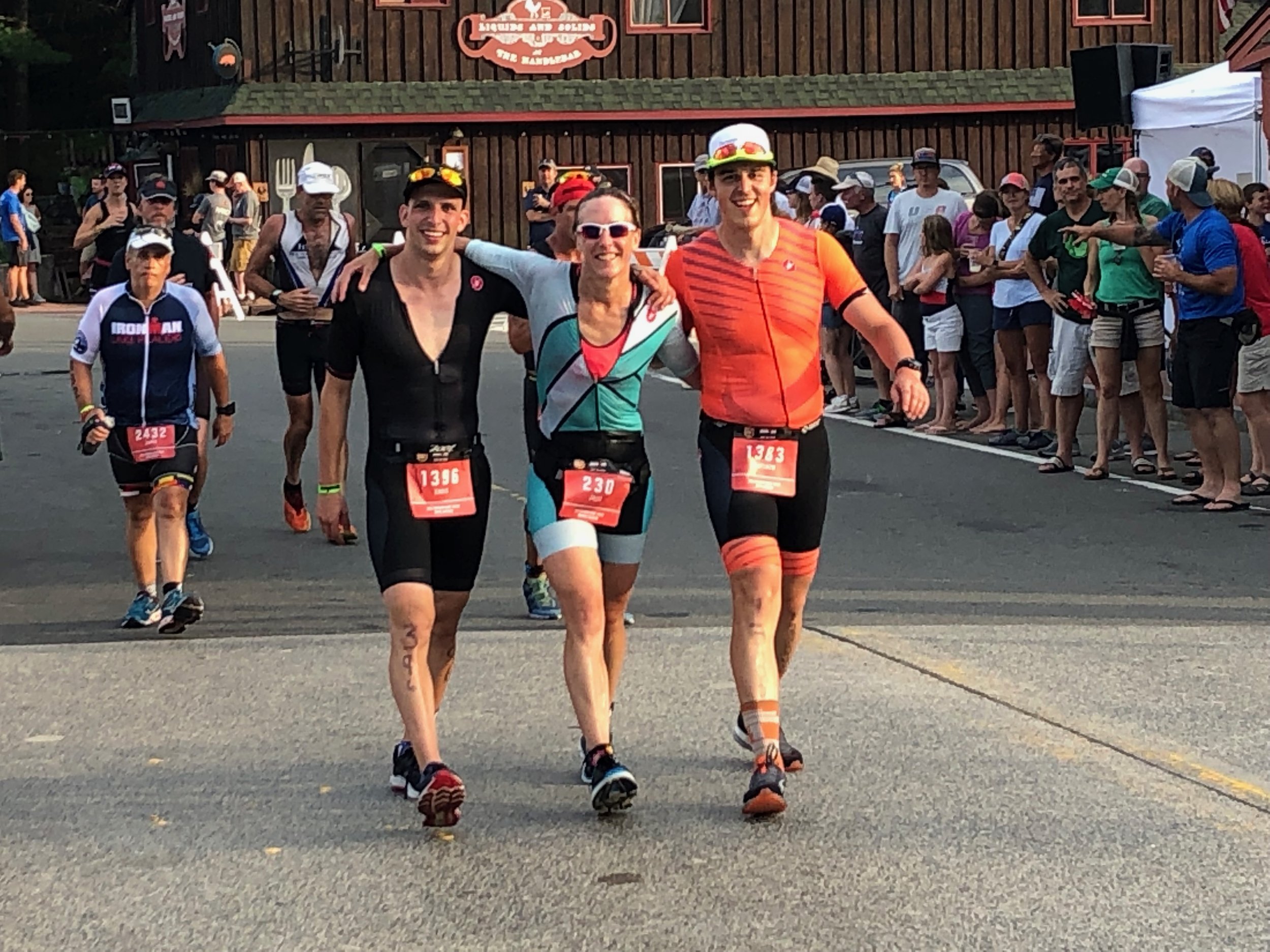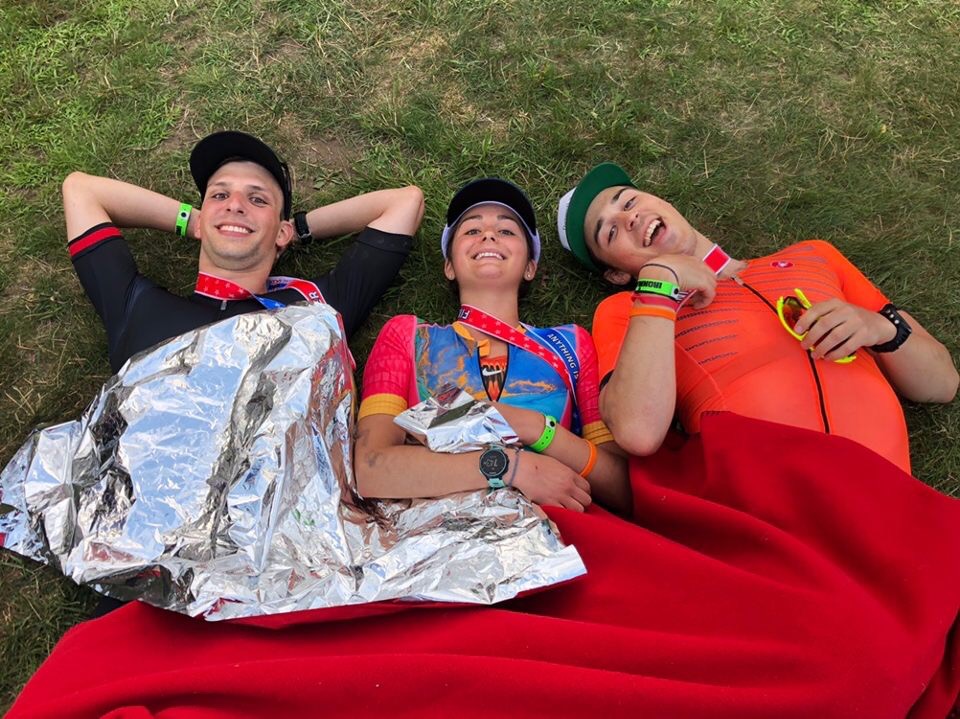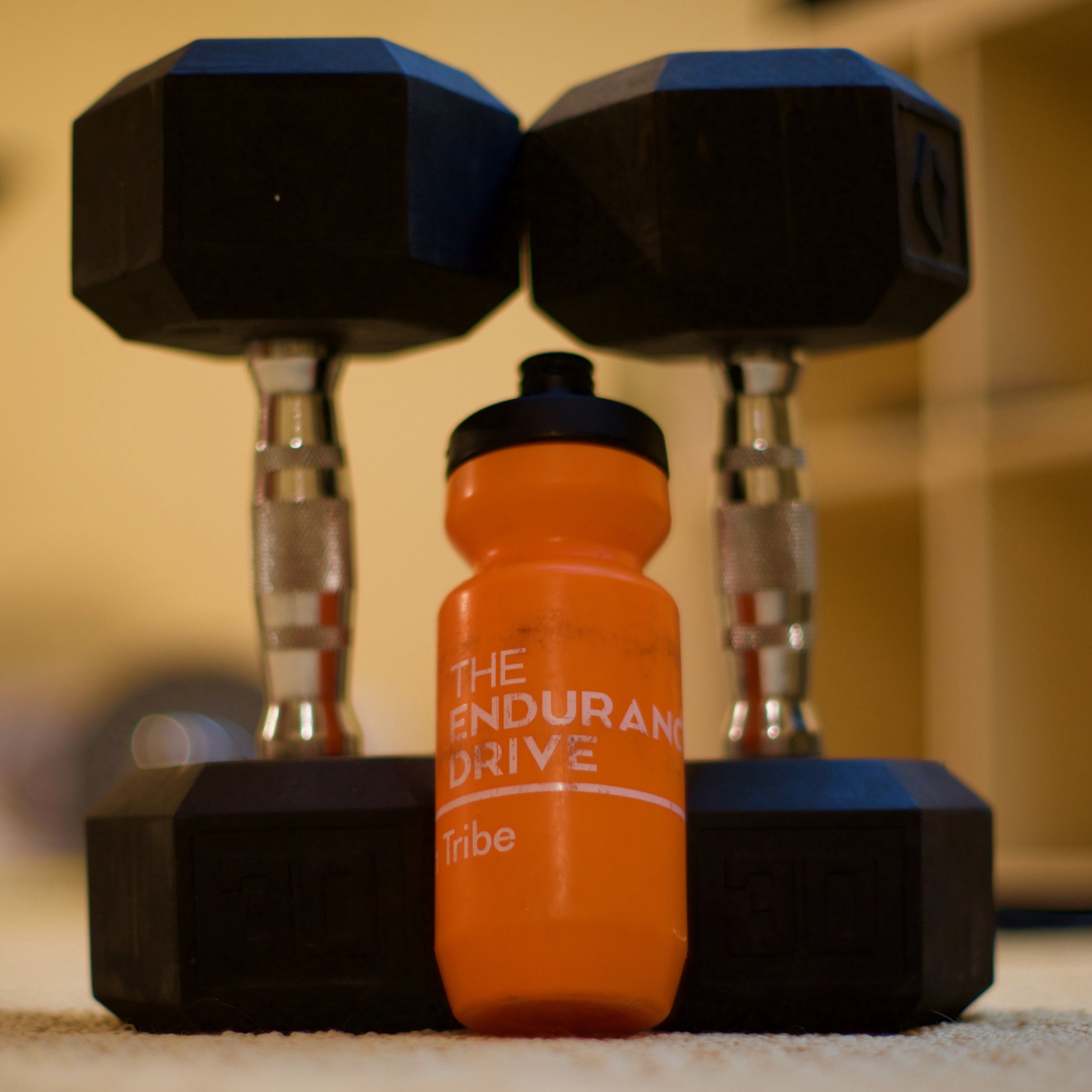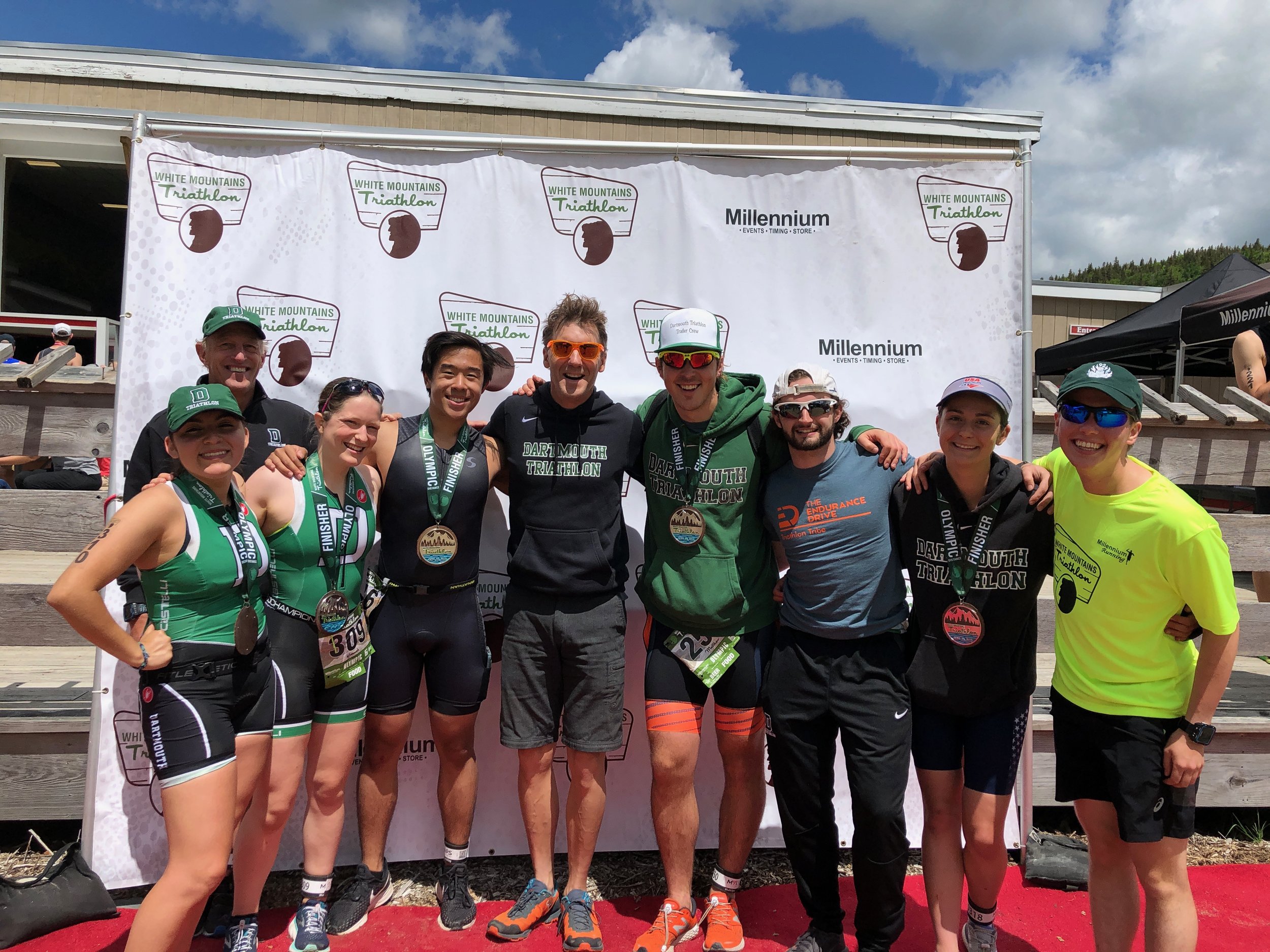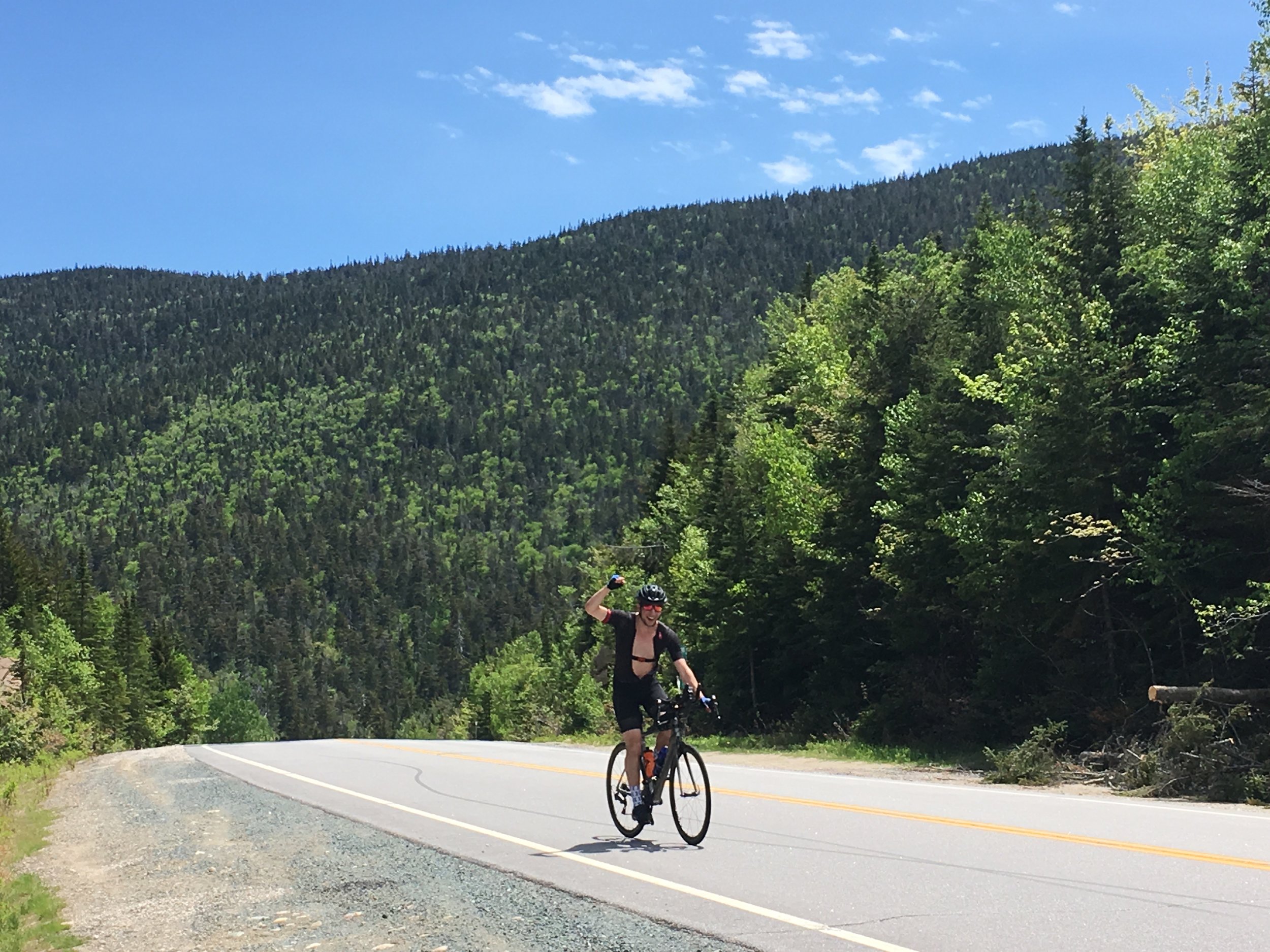Timberman 70.3 Half-Ironman in Laconia, NH was my first triathlon experience. With about 13 weeks of training I knew I would be able to cross the finish line if I relied on lessons learned throughout the summer. In late May, I set a goal of a sub-7 hour half-ironman under three broad assumptions—a bad swim, an average 15 mph bike, and an average 10’ 30” per mile run. On race day, I predicted a 7:30:00 overall time, and I aimed for a 3:30:00 on the bike. Here’s a recap:
Swim: The swim course on Opechee Lake had three red turning buoys, with four yellow “outbound” buoys and four orange “return” buoys for athletes to follow. On the morning of the race, the water temp. was 75.4° F, meaning that the race was swimsuit legal according to the athlete guide. This meant that athletes could wear a wetsuit and maintain their eligibility for age-group awards and/or world championship slots. I decided to wear a wetsuit and lined up with the 50-55 minute projected swim finish group.
The swim was my greatest concern because I lacked a metric for my race swim pace. Though I’d been exclusively training in open water all summer, the Garmin Forerunner 35 never produced usable data. I settled my nerves by talking with a few competitors as we waited for the waves of athletes ahead of us to start. For many athletes I spoke to it was their first half-ironman, and for a few their first triathlon. At 7:18 am, I entered the water. I spent the first 20 mins. finding my rhythm. At some point between the first and second turning buoy, I took a second to look at the other athletes and I decided that I was raising my head too much when I went to breathe. I adjusted my form and the benefit was instant; I felt faster and more relaxed. I exited the swim with a smile, and was surprised to see Dartmouth Triathlon coach Jeff Reed cheering (alongside Coach Jim) as I headed to T1.
Bike: I felt most prepared for the bike. I’d spent the summer adding miles on the bike and I’d completed several long-rides beyond 56 miles, so I had no doubt I could complete the distance from a training standpoint. I hadn’t been able to preview the course, but a quick review of the athlete guide (and a few conversations with teammates) informed me that the first 35 miles were relatively flat and the next 21 miles had challenging ascents.
I saw several teammates along the course, including Coach Katie Clayton and London (on their way back from the turnaround), Vaishnavi, and Evelyn. Throughout the first 2.5 hrs. I fuelled well (water/Gatorade every 30 mins., gel/bloks/Clif bar every 60 mins.) and felt strong. The ascents in the latter half of the course felt familiar having cycled similar ascents in New Hampshire and back home in Maine. Three-quarters of the way up the final ascent (about 3:04:00 in the bike), I dropped chain. I hopped off the saddle for a quick fix and proceeded to power through the descents. Checking my watch, I knew I would be close to 3:30:00 if I pushed myself through to T2. I completed the segment with an official time of 3:30:11.
Run: The run course consisted of two ~6 mi. loops around Opechee Lake, followed by a straight downhill to the finish. I used the first loop to orient myself to the run, and simply focused on reaching “the next aid station” (mentally, every aid station became “the next aid station”) for water or Gatorade.
Rather than my regimented nutrition on the bike, I lost a sense of fuelling during the run. Other than the banana I strategically picked up around mile 6, I was unfocused with my nutrition—this is something I plan to improve for the next race. Nevertheless, the miles passed without much trouble. By 6.5 miles I was bolstered by the knowledge that I would complete a half-ironman (because I couldn’t just run half the distance). Around mile 12, my right calf cramped (for the first time in a racing or training environment) as I descended into Laconia, though the pain was manageable; I smiled as I heard athletes being announced at the line less than a mile away.
My teammates were there cheering me on and it felt like the perfect finish. In the end, I completed the event in 6:58:48 (49:04 swim, 3:30:11 bike, 2:24:41 run).
Final Thoughts: Adventurer Mark Beaumont said that in his first circumnavigation of the world (by bike) in 2008, he came within eight hours of his planned duration (with a total time of 194 days and 7 hours). He learned how closely his goals were related to his actual performance. I was shocked by how close my performance came to my goals and estimates—after seven hours, I hit my target half-ironman within 1’ 12” and my target bike within 11.” Given the connection between goals and race performance, I plan to set informed targets for the swim and run in future races.
- Ben Levesque
(Ben is a member of the Dartmouth Triathlon Club and class of 2024)
Dartmouth Triathlon Club IRONMAN Timberman 70.3 finishers.
Ben crosses the finish line at Timberman 70.3, his first triathlon!

